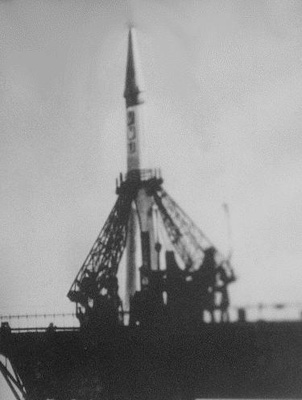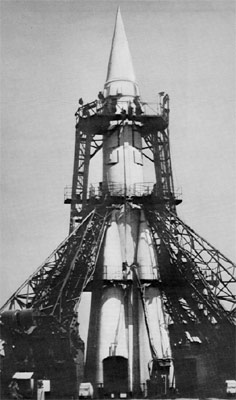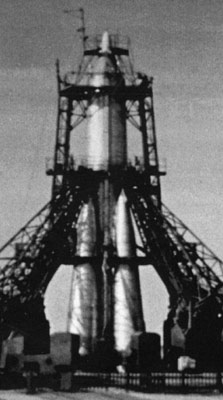R-7 (SS-6 Sapwood) Russian Intercontinental Ballistic Missile
One of the best-known yet least publicized Soviet missiles, this was the original Russian ICBM, tested in August 1957 with complete success. It represented a quantum-jump in Russian rocketry, but was to some degree a manifestation of "brute force and ignorance" intended to provide a powerful launcher able to put the massive first-generation thermonuclear warhead into intercontinental trajectories. In the absence of large rocket engines the obvious answer was more engines, and at liftoff SS-6 had 32 all firing together, and all burning lox/kerosene. The core was powered by an RD-107 with four fixed thrust chambers with a combined rating of 211,640 pounds, later raised to 224,868 pounds. Around this were disposed four tapered strap-on boosters, each with an RD-108 of 224,868 pounds. The other 12 chambers were groups of small gimbal-mounted verniers for fine control of trajectory. Structure weight was about 61,730 pounds. By the time Sapwood was at IOC in 1959 it was recognized as obsolescent as a weapon, and most served as space launchers. One put Sputnik 1 into orbit on October 4th 1957 and another put Yuri Gagarin into orbit on April 12th 1961; others have been the first stage of Sputnik, Vostok, Voskhod or Soyuz launchers.
Dimensions: Length: 100 feet; diameter (max, each of five sections) 9 feet 9 inches.
Launch weight: 650,353-661,396 pounds.
Range: At least 6,214 miles with heavy warhead.

R-7

R-7 (development)

R-7A